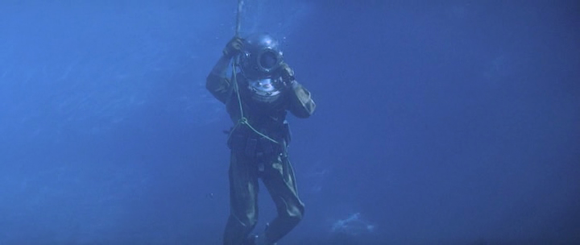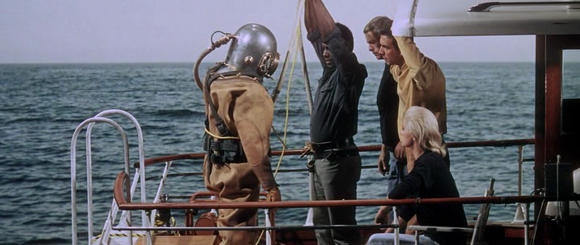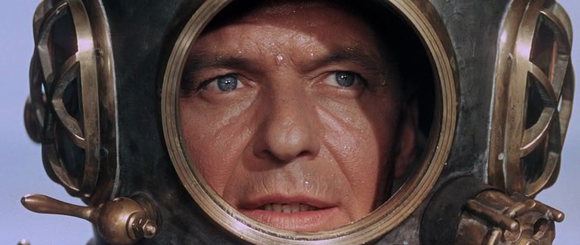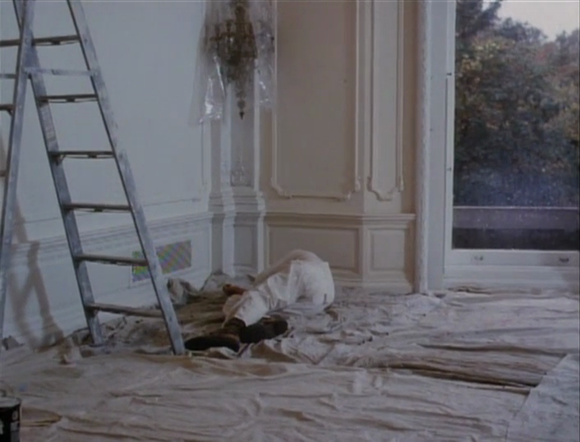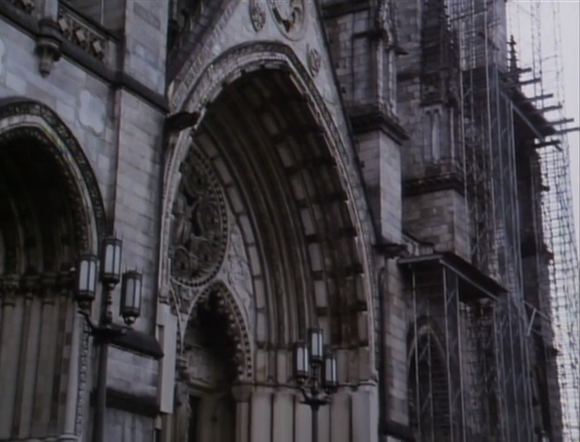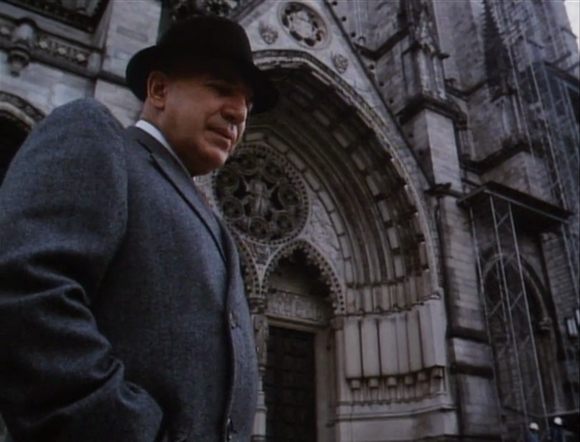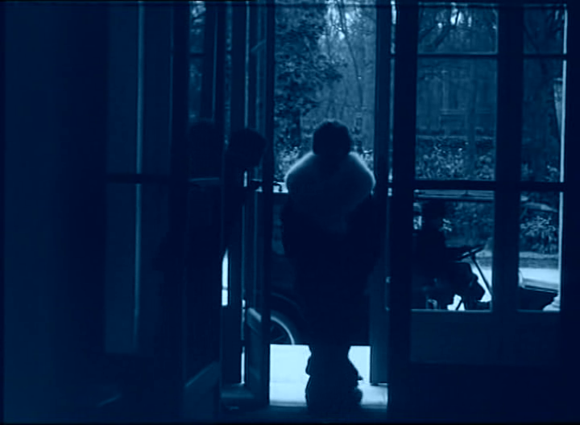zeph’s pop culture quiz #53
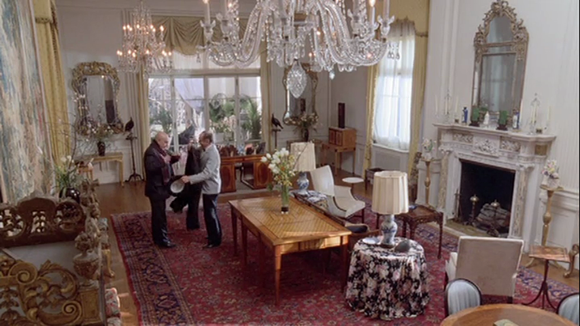
Which movie is payed homage to by the scene about to commence in the screencap? Bonus question: Which other movies are cited in the movie the screencap stems from?
Simply leave a comment with your educated guess—you can ask for additional hints, too. [Leaving a comment is easy; just click the ‘Leave a comment’ at the end of the post and fill in the form. If it’s the first time you post a comment, it will be held for moderation. But I am constantly checking, and once I’ve approved a comment, your next ones won’t be held, but published immediately by the system.]
UPDATE 1 (16 December 2012):
From the attempts so far we know that it’s Telly Savalas, again as Kojak, and that the screencap does not stem from a series episode, but from a feature-length film. Here is another hint: A serious step towards the solution lies in the fact that the butler takes Kojak’s coat, shawl, and hat.
UPDATE 2 (17 December 2012):
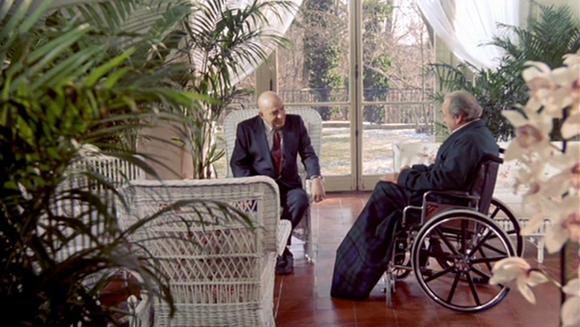
All right, as the riddle seems to be so hard, here is a screencap of how the scene continues …
UPDATE 3 (18 December 2012):
Well, Alexander Rabitsch meanwhile ↵has correctly deduced that the screencaps stem from ‘Kojak: None so Blind’ (Metzger 1990). But he is at a loss in respect to which movie is cited by the scene depicted. The only thing on his mind is ‘Brideshead Revisited’—the movie (Jarrold 2008), the TV serial (Sturrid & Lindsay-Hogg 1981), the novel (Waugh 1945), or all three of them.
Now, come on … a detective visits the luxurious mansion of an elderly, rich, and influential man. The butler advises him to take off hat, shawl, and coat, because the master of the house wants to meet the detective in the conservatory or sunroom [as we are in the US of A], which is superheated. Surrounded by exotic plants the detective then has a conversation with the tycoon. The latter is not only sitting in a wheelchair, but, in spite of the heat, is wrapped up in blankets. From which movie does this scene stem?
In the solution to ↵#52 I told all of you that I definitely take the post-series Kojak-movies to be neo-noir. So it wouldn’t be too far-fetched that here a film noir classic is cited. And as Theo Kojak undisputably is a hardboiled character, the detective in said classic may well be iconically hardboiled, too …
UPDATE 4 and solution (20 December 2012):
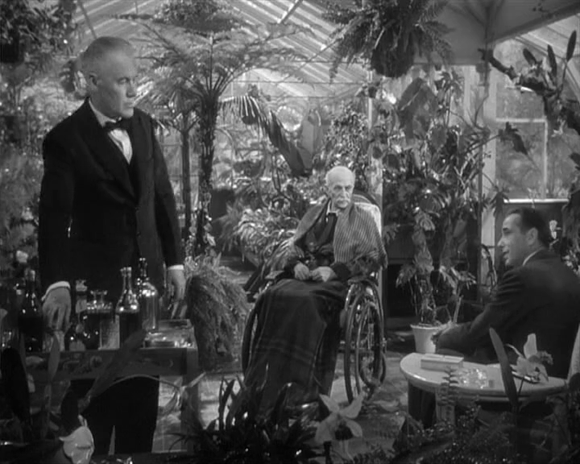
General Sternwood (Charles Waldron) just asked: ‘How would you like your brandy, Sir?’ to which Philip Marlowe (Humphrey Bogart) replies: ‘In a glass,’ which leaves Norris the butler (Charles D. Brown) somewhat consternated.
The second screencap with the description and additional hints finally did it and ↵Alhambra solved the riddle—congratulations! Alexander Rabitsch then quickly came up with a ↵matching screencap. The scene cited is from the opening sequence of ‘The Big Sleep’ (Hawks 1946), based on Raymond Chandler’s debut novel of the same name (1939), starring Humphrey Bogart and Lauren Bacall. For more on Chandler, Bogart, hardboiled and noir see e.g. ↵who wrote it? and ↵the simple art of murder. Besides the conservatory scene and all the noir elements, ‘None so Blind’ has even more in common with ‘The Big Sleep’ … a wonderfully convoluted plot.
While filming ‘The Big Sleep’ an argument unfolded between Howard Hawks, Bogart and the trio William Faulkner, Leigh Brackett, and Jules Furthmann who had adapted Chandler’s novel for the screen. The question was if the chauffeur Owen Taylor (Dan Wallace) had been murdered or had commited suicide. Finally the five of them agreed to ask Chandler himself. In a letter the latter three years later recalled:
I remember, several years ago when Howard Hawks was making [‘The Big Sleep’], he and Bogart got into an argument as to whether one of the characters was murdered or committed suicide. They sent me a wire (there’s a joke about this too) asking me, and dammit I didn’t know either. Of course I got hooted at. (Chandler 2000 [1949])
Yet, there seems to be ↑something more the matter with ‘The Big Sleep’s convoluted plot. Again speaking of ‘None so Blind’ … I’ve watched it two times in short sequence and, quite honestly, still am not so sure about some parts of the plot.
However, all this still leaves us with the bonus question: Which other movies are cited in ‘None so Blind’? ;)
UPDATE 5 and bonus screencap (20 December 2012):

Due to public demand: Which other movie is cited here?
UPDATE 6 and bonus solution (05 January 2013):
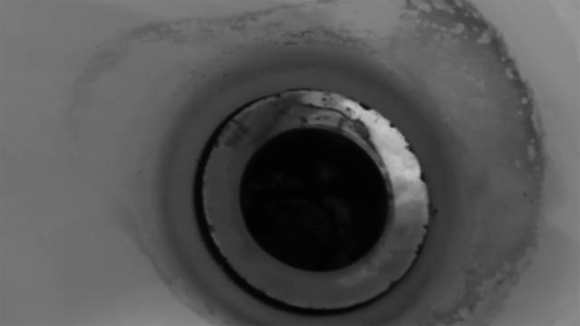
Alhambra ↵immediately recognized that in the bonus screencap of course the famous shower scene from ‘Psycho’ (Hitchcock 1960) is cited. Congratulations.
To my eye there may several more movies being cited in ‘None So Blind,’ but I can’t show them clearly by screencaps, yet. So, I guess I’ll keep those other movies for later quizzes :)
CHANDLER, RAYMOND THORNTON. 1939. The big sleep. New York: Alfred A. Knopf.
CHANDLER, RAYMOND THORNTON. 2000 [1949]. “Letter to Jamie Hamilton, 21 March 1949,” in The Raymond Chandler papers edited by Tom Hiney and Frank MacShane, p. 105. New York: Atlantic Monthly Press.
HAWKS, HOWARD WINCHESTER. 1946. The big sleep [motion picture]. Burbank: Warner Bros.
HITCHCOCK, Sir ALFRED JOSEPH. 1960. Psycho [motion picture]. Hollywood: Paramount Pictures.
JARROLD, JULIAN. 2008. Brideshead revisited [motion picture]. New York: Miramax Films.
METZGER, ALAN. 1990. Kojak: None so blind [TV movie]. New York: CBS.
STURRID, CHARLES B. G. AND Sir MICHAEL EDWARD LINDSAY-HOGG. 1981. Brideshead revisited [TV serial]. 11 episodes. London: ITV.
WAUGH, ARTHUR EVELYN ST. JOHN. 1945. Brideshead revisited: The sacred & profane memories of Captain Charles Ryder. London: Chapman & Hall.


